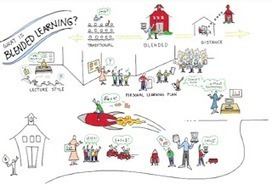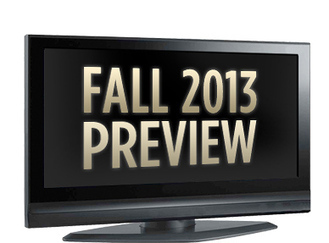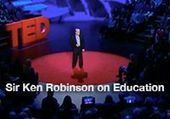A slideshow modelling an explicit lesson on metaphor. For professional development sessions.
Category: teaching practice
Teacher training or curriculum review?
This article comes from The Conversation and says it much more clearly than I could.
It's time for parents to have their say on the national curriculum
By Misty Adoniou, University of Canberra
Australia’s national curriculum, which is set to be reviewed, is an easy document for anyone to find and read. It really doesn’t require two experts – or six months – to report on it.
Over the past six years or so, thousands of experts have already had their input. Now it’s time for the parents of the tens of thousands of children who will be taught the curriculum to have their say.
What is the Australian Curriculum?
The Australian Curriculum describes what we think all students in Australia should know and do throughout each year of schooling.
It was introduced by the Howard Coalition government, and an independent board was set up to oversee its construction. The work continued under the Rudd/Gillard governments. Over more than six years, teachers, students, parents and citizens associations, academics and employers participated in a nationwide public consultation process to develop the curriculum, alongside an extensive audit of the national curricula of other countries.
So far, the English, Maths, History, Science and Geography curricula have rolled off the production line. This means they have made it through several years of drafting and consultation, and been signed off by every state and territory education minister, of both political persuasions.
Are there links between the national curriculum and declining international test results?
We can’t blame the national curriculum for a decline in Australia’s results in international and national tests. The English, Maths, History, and Science curricula were released only three years ago, and only the ACT has implemented them from the beginning. Victoria began implementation in 2013 and NSW will roll it out this year.
If Australia’s decline in national and international standardised testing could be reduced to something as simplistic as a faulty curriculum, then existing state curricula would have to bear the blame.
But the reality is curricula don’t teach children, teachers do. The national curriculum describes what to teach, but doesn’t tell teachers how to teach. Teachers must bring their own skills and knowledge of their students and their local contexts to the task of turning curriculum content into student learning.
It will be an investment in teaching that will change student learning outcomes, not tinkering with curriculum content.
Easy to read
Education minister Christopher Pyne and the two men he has charged with reviewing the curriculum, Kevin Donnelly and Ken Wiltshire, have all claimed that the curriculum is full of “impenetrable jargon”, and “eduspeak”.
These documents are written for educational professionals who have completed lengthy university degrees so we would expect there to be some language that is specialist to its field. In much the same way, doctors and lawyers have to deal with the jargon that is both necessary and specific to their fields.

Notwithstanding that, the curriculum documents are remarkably free of unnecessary jargon. They are very easily read by interested parents and citizens. As an example, here are the four key inquiry questions that constitute the year’s curriculum for History in Year 6, which are typical of the plain English used throughout the curriculum.
Why and how did Australia become a nation?
How did Australian society change throughout the twentieth century?
Who were the people who came to Australia? Why did they come?
What contribution have significant individuals and groups made to the development of Australian society?
The national curriculum is a remarkably concise document, nothing like the “telephone book” Donnelly has described it as.
In the primary school years, one year’s content for each curriculum area fits onto one or two computer screenshots. In each secondary curriculum area, every year level has two or three pages of content. It’s hard to imagine how a year’s worth of content could be reduced any further, or why it would need to be.
A radical left-wing curriculum?
The content of the national curriculum is actually very conservative. The classic “Australian” touchstone of Anzac Day is covered explicitly in Year 3 and Year 9 history. The History Content Descriptors in Foundation, Year 1, Year 2 invite teachers to cover Anzac Day when they look at meaningful celebrations in the children’s lives and communities.
For those, such as Pyne, who are concerned Western civilisation and its impact on today’s Australia might not be getting a fair run, children in Years 4, 5 and 6 spend that time exploring the establishment of white colonial Australia through to modern-day Australia. And they do it again in Year 8, Year 9 and Year 10.
There is also nothing airy fairy about the new English curriculum – it’s all about explicit teaching of the language. In Year 1 – as well as a solid grounding in phonics – students learn about nouns, verbs, adjectives and adverbial phrases.

In Year 2 they move on to noun groups, articles, clauses and co-ordinating conjunctions, which will make seven-year-olds more linguistically savvy than the majority of the current Australian adult population.
A curriculum for all?
A nation’s curriculum should reflect its citizens. The appointed panel of two middle-aged Anglo-Australian reviewers will have no trouble seeing themselves in the current national curriculum.
Australia’s national curriculum is a pretty innocuous collection of traditional Anglo content. This is a shame for all the non-Anglo Australians in our classrooms who will find it much harder to see their lives and experiences being described.
As a result, teachers will have to work hard to ensure the curriculum meets the needs of all their students. And parents should be partners in that work.
By reading the curriculum content for their children’s year levels, parents can find the places they can help the teacher with resources, information and stories about their families and experiences. That will help the curriculum content come alive for all the students in the class.
This way, all students will be able to see themselves reflected in the curriculum. After all, it was written for all Australian children.
Misty Adoniou has been a member of the Equity and Diversity Advisory group, independently appointed by the Australian Curriculum Assessment and Reporting Authority to provide advice on the Australian Curriculum.
![]()
This article was originally published at The Conversation.
Read the original article.
The Basics of Blended Learning
See on Scoop.it – teaching with technology
a graphic overview of just what it is that makes blended learning work.
See on www.educatorstechnology.com
@ TeacherToolkit
See on Scoop.it – teaching with technology
Award winning Assistant Headteacher
Another inspiring blog to follow. This Headteacher from the UK blogs about innovation and leadership.
See on teachertoolkit.me
Award winning blog
See on Scoop.it – teaching with technology
This blog is a finalist in the Edublog awards. Rachel jones blogs about her teaching experience, sharing her reflections and trials with her readers.
See on createinnovateexplore.com
What’s Our Vision for the Future of Learning?
See on Scoop.it – teaching with technology
Author David Price writes: “If schools are coming into direct competition with the learning opportunities available in the informal social space, it has to be said that this is a pressure, which barely registers within the political discourse.
In the following pages, Price describes three cases across the globe — in London, Sydney, San Diego — that have mapped a vision that answers the questions above. Here’s what they have in common:
– By insisting that their teachers and mentors share their learning, all three have de-privatized teaching and learning.
– By opening up the commons, and by designing workspaces without walls, they have brought Edison’s ‘machine-shop culture’ into education.
– By bringing into the commons, experts, parents and investors, they have given an authenticity to the work of their students that is impossible to simulate in an enclosed classroom.
– By modelling collaborative working to their students they have fostered the peer learning which is at the heart of ‘open’.
– By emphasizing adult and real-world connections, they ensure that students are preparing for the world beyond school by being in that world.
– By making their expertise and intellectual property freely available, they have created high demand from their peers and ensured that knowledge travels fast.
– By seeing technology not simply as an aide to learning but as the imperative for change, they ensure that their programs are relevant to societal needs and societal shifts.
– By trusting in their staff and students, and by giving them freedom and responsibility in equal measure, they have fostered a culture of learning that rewards respectful challenge, shuns unnecessary deference, and therefore constantly stays in motion.
A summary of the ‘wish list’ for future learning. Many of the items here we can begin working on straightaway.
See on blogs.kqed.org
Six-Word Memoirs In Schools | The Six-Word Memoir Blog
See on Scoop.it – teaching with technology
Teach students succinct and clear writing.
See on www.smithmag.net
Not Quite What I Was Planning: Six-Word Memoirs Book News, Press, Tour Dates & More
See on Scoop.it – teaching with technology
Press, tour dates & other news about Not Quite What I Was Planning, SMITH Magazine’s book of six-word memoirs
Erudition distilled. Write your viewpoint down.
See on www.smithmag.net
The Secret to Learning Anything: Albert Einstein’s Advice to His Son
See on Scoop.it – teaching with technology
“That is the way to learn the most, that when you are doing something with such enjoyment that you don’t notice that the time passes.”
From the wonderful Brain Pickings team is this piece of advice from Albert Einstein to hIs son. Learning is easy when you love it.
See on www.brainpickings.org
Presentation Zen: Sir Ken Robinson gives best talk yet at TED Talks Education
See on Scoop.it – teaching with technology
“Creativity and education expert Sir Ken Robinson delivered two amazingly popular TED Talks prior to 2013. His first talk http://bit.ly/1fjhkH6 —presented sans multimedia in the true Sir Ken Robinson style — was made in 2006 and is the most viewed TED talk of all time. His follow-up talk given in 2010 http://bit.ly/1f6zZp2 also has been downloaded millions of times. I have seen Sir Ken speak many times and he is always inspiring and engaging, but his latest TED talk, http://bit.ly/IEXH0Q presented at TED Talks Education in April of this year, is my favorite yet. Good presentation is a balance of information, persuasion, and inspiration. Presentations related to leadership must necessarily light a spark and point the way. Sir Ken does not scream or jump up and down but he nonetheless ignites, provokes, and inspires his live audience, and anyone else who cares to listen to his presentation on line, in a meaningful and memorable way. Millions of people have seen his latest talk, but just in case you have not, please set aside about 20 minutes to watch this outstanding, albeit short, talk below.”
Sir Ken certainly has a lot to say about education. It is important to listen to voices that challenge you.
See on www.presentationzen.com








